If you look at the cover picture and spontaneously think of the TV series ‘Outlander’ – then you’re absolutely right! Because here are the role models for the time travel bricks…
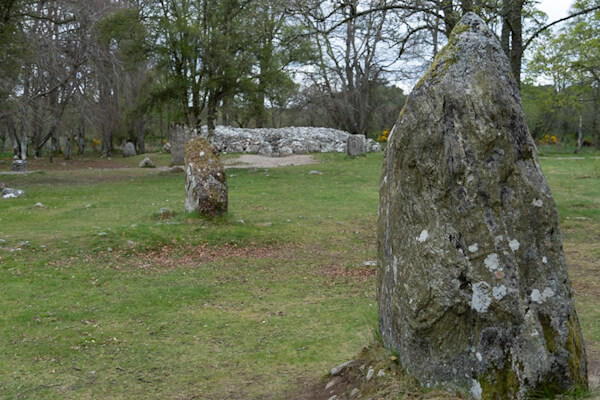
Intro and travel report
Touching the stone and travelling through time – that’s how we like it. But it doesn’t seem to be quite so easy, because the (all female) visitors who touched the large Standing Stone in the Clava Cairns during our visit were all still there afterwards…
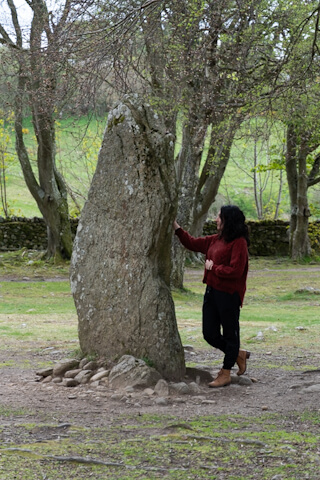
They were in the right place, because this is definitely where the role models for the Outlander saga stand!
But we can at least fictitiously travel back in time, about 4000 years ago, to the Bronze Age.
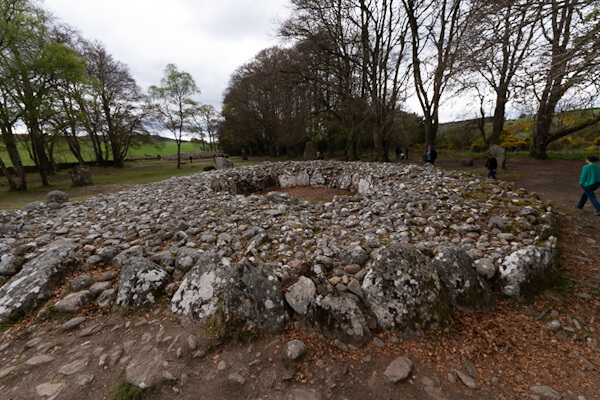
Here they still stand in full splendour and height, three cairns, or burial mounds. The centre one forms a closed ring (Ring Tomb), the two outer ones have an entrance portal (Portal Tomb). Both portals face south-west, in the direction of the winter solstice.
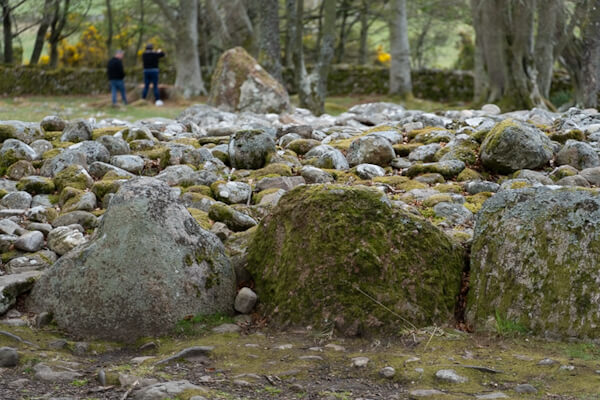
The stones are both a church and a cemetery. The old, pagan beliefs still prevail and no one will hear of Christians for the next 2000 years.
One of the rings is clearly framed by larger stones, so-called kerb stones. And all the rings are surrounded in a circle by standing stones of different sizes.
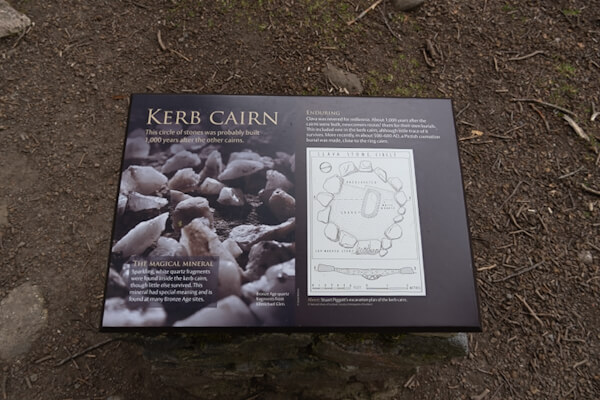
This is how a sacred burial site has been built in this region since time immemorial. Druids know how to find sacred places and each of these Bronze Age places of worship that I have visited, whether in Ireland, Scotland or England, is situated in a landscape that has an effect on people all by itself.
It’s always a special landscape that you want to take in with all your senses, even the less spiritual people (like me).

Important people are laid to rest here. We know little more, but the alignment with the winter solstice (or summer solstice in other places) suggests that other rituals also took place here.
The calendar of the sun and stars has always been important to people, and this is also the case here. Important events were organised and festivals celebrated according to it, but sacrifices were also made and masses read.
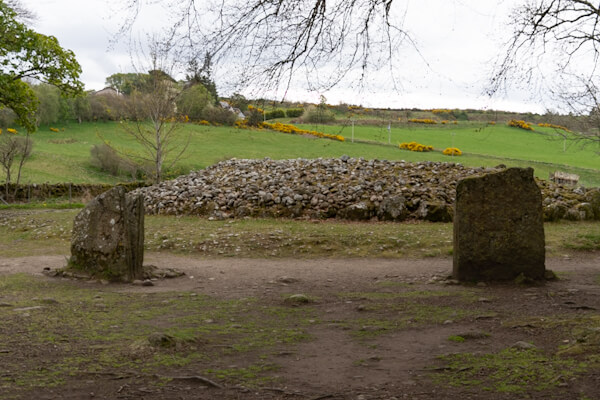
Unfortunately, we no longer know whether advice was given and justice administered here.
But we do know that even then there were secular clan leaders and spiritual priests or druids who advised them. Knowledge, faith and power were closely interwoven, as no clan chief could afford to incur the displeasure of the gods.
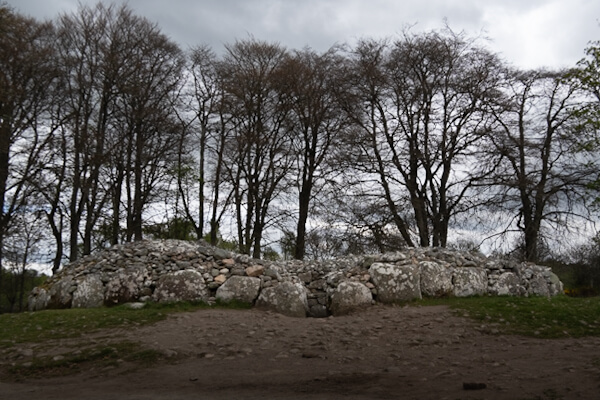
I can literally see them in front of me, a procession of simply dressed people with long hair, gazing spellbound at the druid who is interpreting the signs in the sky with meaningful gestures.
A sharp jolt jolts me back to the here and now: our dog is tugging at the lead, which is stupidly hanging from my wrist. He doesn’t know what he’s doing here in the forest, let alone on the lead!
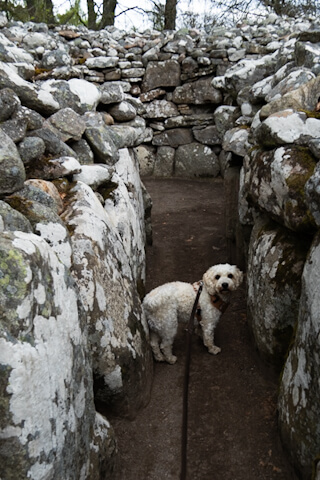
I try to take a few photos with my camera with one hand and direct the dog with the other without constantly getting the lead wrapped around my legs.
I’m moderately successful: yes, I take a few photos and yes, my legs are constantly tangled up in the lead.
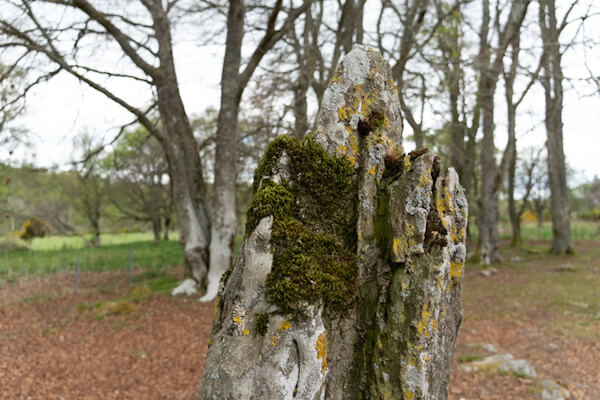
This site inspires me enormously. It is close to Culloden, the battlefield where the Scots lost their last decisive battle against the English. I also wanted to visit Culloden, but the car park was already too full to find a place with our (too big) motorhome. See: https://www.visitinvernesslochness.com/listings/culloden-battlefield-and-visitor-centre.
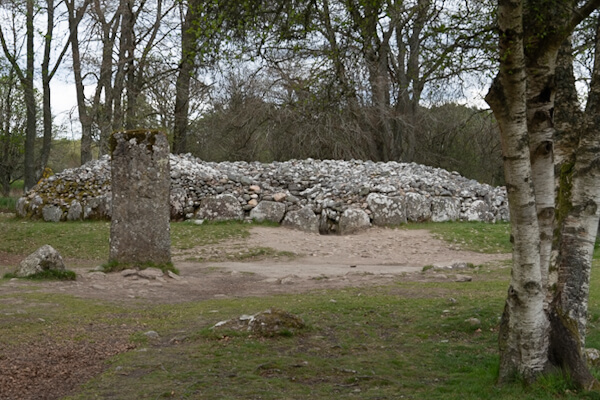
But that hardly bothers me, because I really like the Clava Cairns. From the small woodland car park, you can enter (free of charge) through a small gate into the reasonably sized grounds. See: https://www.visitscotland.com/info/see-do/clava-cairns.
The cairns are in the middle of a small, sparse forest and are surrounded by beautiful old trees. Were they beech trees? I think so – and also oaks and birches. In any case, the place is simply beautiful despite the cloudy sky.
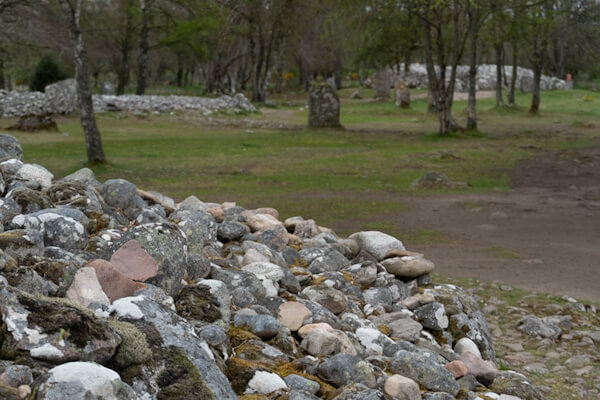
Through the clearing, you can look across the narrow road to the hill opposite with its gorse, grass and heather. A typical Scottish landscape.
The large standing stones create a mystical atmosphere. But it’s not spooky at all – on the contrary, it’s very inviting.
A few visitors stroll around the Ring Cairns and some read the information boards placed in front of it. The hustle and bustle is manageable and very pleasant, as everyone seems positively relaxed.
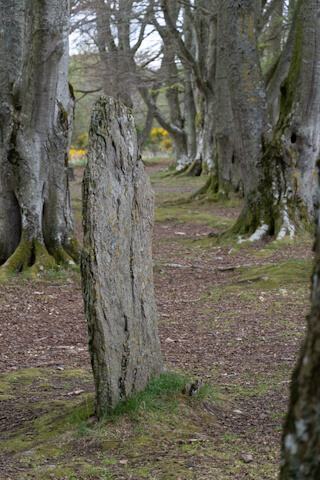
In our hectic world, this is all too often the exception, so the stones seem to have a calming effect on modern people too – very interesting. My dog also slowly calms down and takes the (boring) walk with more composure – wonderful.
A few more photos and we sit down among the stones for a while. The coolness of the forest surrounds us and we feel completely at home. It must have been like this for people 4000 years ago…
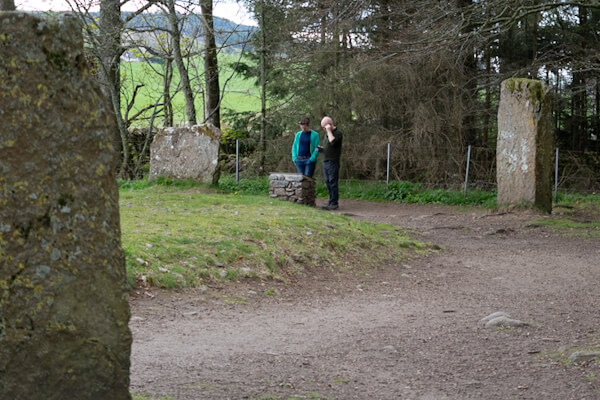
Conclusion
The Clava Cairns are a burial complex from the Bronze Age. They consist of three ring-shaped burial mounds and several standing stones of different sizes.
The small site is freely accessible to the public and very easy to find via Google Maps near the Culloden Battlefield not far from Inverness.
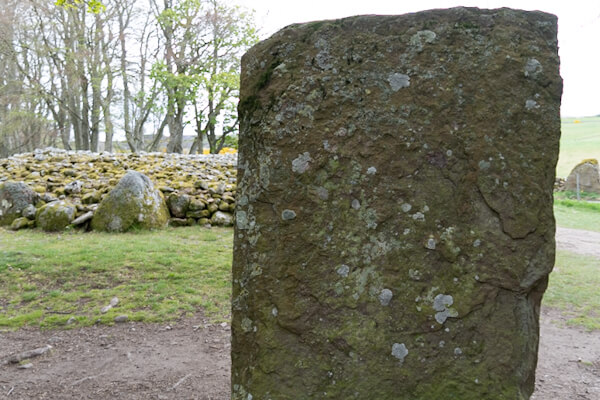
If you have the opportunity, it’s best to visit Culloden early in the morning, as the car park can get crowded after that, depending on the season. You can easily combine a visit to Clava Cairns with this afterwards.
I really liked the small park and can definitely recommend a visit.
More interesting articles for you
EILEAN DONAN CASTLE AND THE ISLE OF SKYE
HOW THE SCOTS LIVED BACK THEN: AT THE HIGHLAND FOLK MUSEUM
FINDHORN AND THE ‘CARIBBEAN’ BEACHES OF THE SCOTTISH NORTH-EAST COAST
Picture credits cover picture: Visitors at a standing stone at the Clava Cairns (Photo: Ulrich Knüppel-Gertberg)